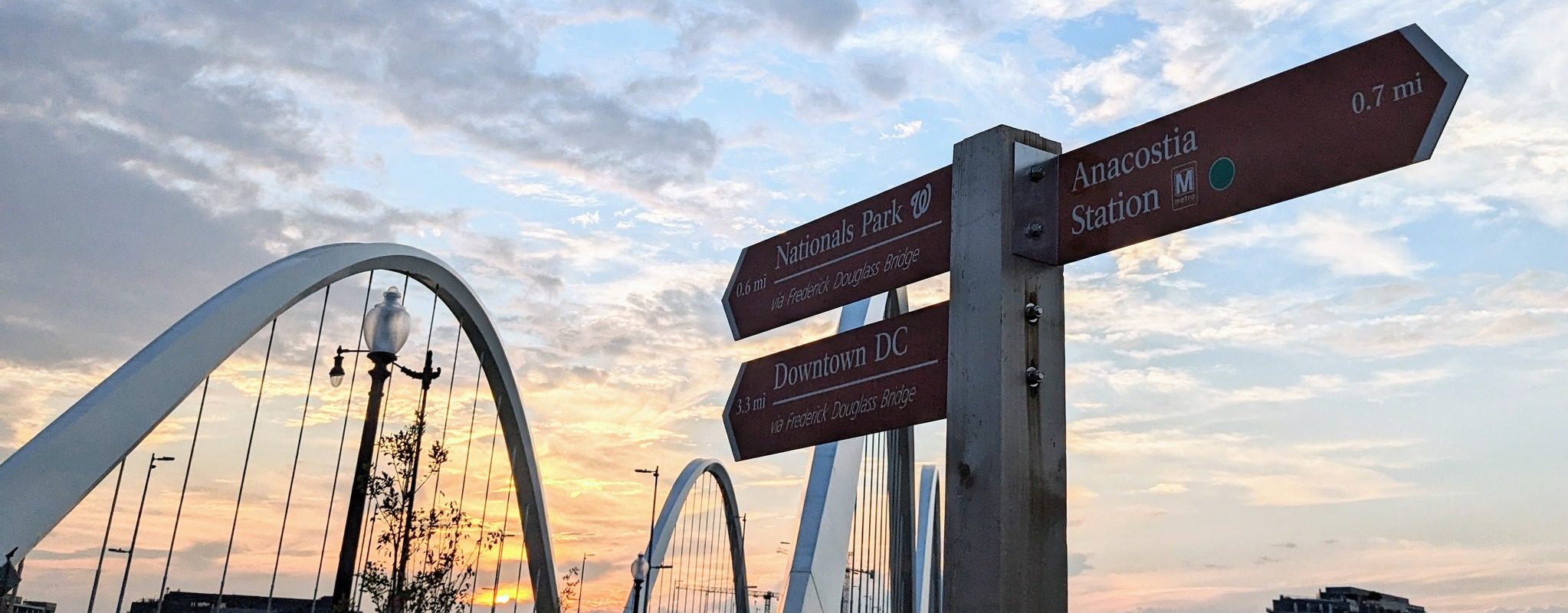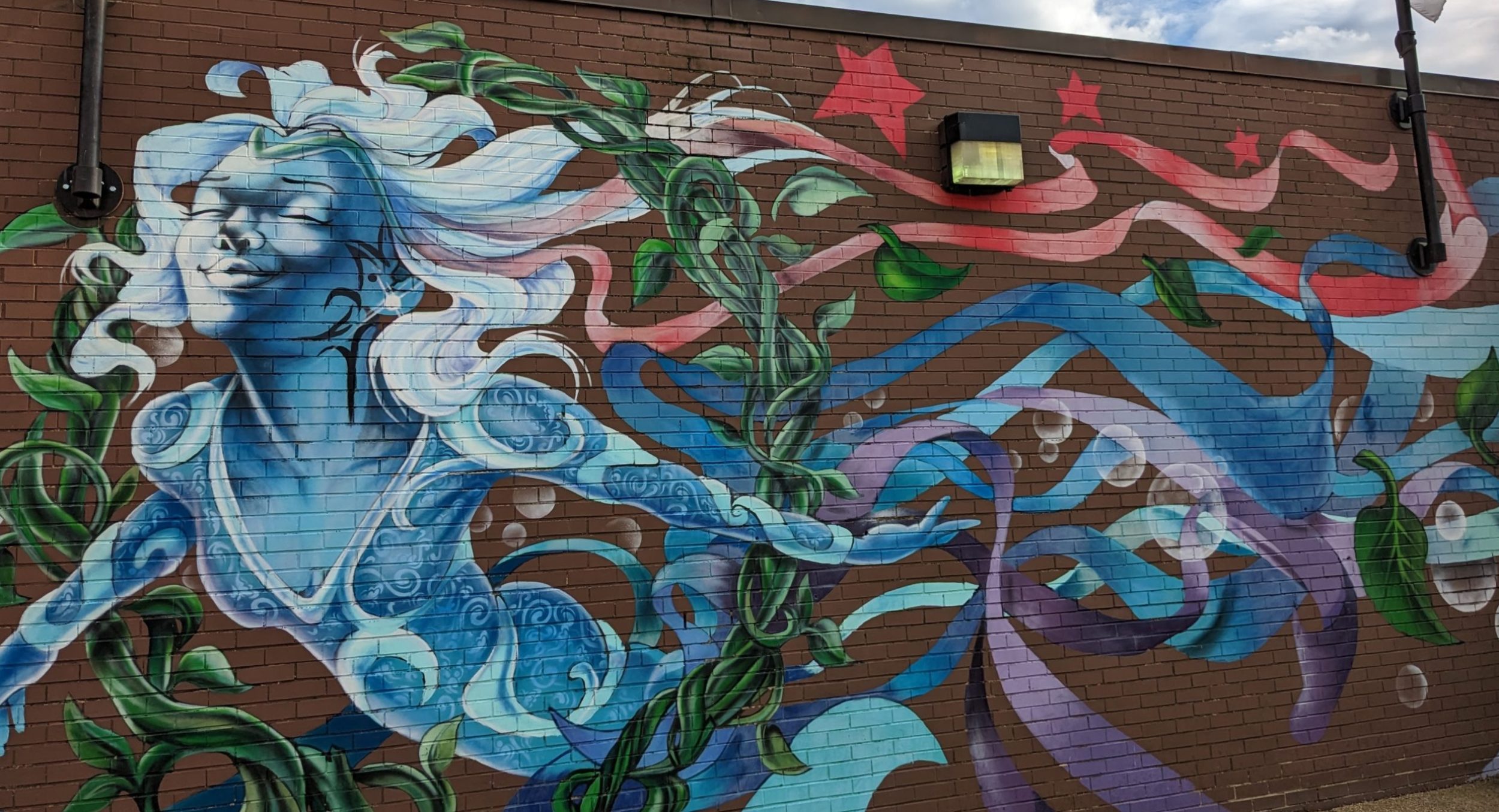The um brella in this picture would have had its due on any beach from New York’s Rockaway to Delaware’s Rehoboth. Some folks passing by it would have smiled at its tropical scenes. In California, the umbrella would have reminded them of warmer clearer water than local waves, which are chilled by Alaska.
brella in this picture would have had its due on any beach from New York’s Rockaway to Delaware’s Rehoboth. Some folks passing by it would have smiled at its tropical scenes. In California, the umbrella would have reminded them of warmer clearer water than local waves, which are chilled by Alaska.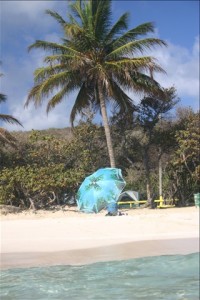 But, this umbrella was planted on one of the world’s most beautiful tropical beaches. The clouds printed on the umbrella sky were little puffs, not the grand islands of cotton that floated above us on Playa Flamenco in Culebra, an island off the east coast of Puerto Rico. The umbrella’s shiny blue water looked nothing like that at Culebra, which starts out perfectly clean near the shore and then looks like jewel colors farther out- aquamarine, turquoise further out. The umbrella’s palm trees were nicely depicted, but what is it to see palm trees without hearing the rustle
But, this umbrella was planted on one of the world’s most beautiful tropical beaches. The clouds printed on the umbrella sky were little puffs, not the grand islands of cotton that floated above us on Playa Flamenco in Culebra, an island off the east coast of Puerto Rico. The umbrella’s shiny blue water looked nothing like that at Culebra, which starts out perfectly clean near the shore and then looks like jewel colors farther out- aquamarine, turquoise further out. The umbrella’s palm trees were nicely depicted, but what is it to see palm trees without hearing the rustle  of winds in their leaves? The calls of the birds that live around them?
of winds in their leaves? The calls of the birds that live around them?
See the gray shape to the right of the umbrella. That’s our tent. We pitched it right by the beach for $20 a night. To the left below is the view from our tent.
And then this is a full shot of the beach.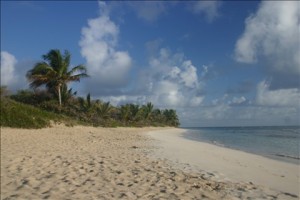
Even the ride to Culebra is beautiful and mellow. The ferry costs $2 and would be worth ten times that if only for the sights.
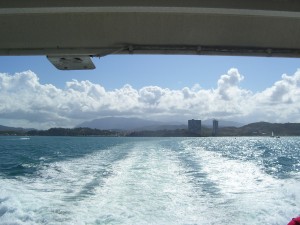 On the way there, I’d joked with David about how often we’d see images of Bo
On the way there, I’d joked with David about how often we’d see images of Bo b Marley. Beach towns around the world usually have some reggae vibe, with cuts of “Legend” playing and Marley’s dreaded and bearded image on t-shirts
b Marley. Beach towns around the world usually have some reggae vibe, with cuts of “Legend” playing and Marley’s dreaded and bearded image on t-shirts 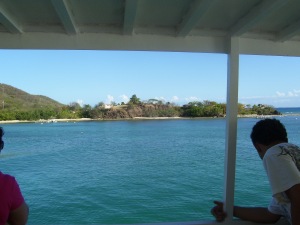 and trinkets. This goes along with hawkers selling you cold drinks and women offering to braid hair.
and trinkets. This goes along with hawkers selling you cold drinks and women offering to braid hair.
I was wrong though. Culebra was too mellow even for rasta pitches. We heard one Bob Marley song during our two days on the island, part of the mix at one of the few restaurants on the island, Mamacita’s.
David and I had planned to snorkel, but instead spe nt much of our two days on the island hanging out on Playa Flamenco. Our big adventure was walking out over the coral rocks to Playa Tamarindo for a sunset drink.
nt much of our two days on the island hanging out on Playa Flamenco. Our big adventure was walking out over the coral rocks to Playa Tamarindo for a sunset drink.
Culebra escaped major development partly by having had the U.S. Navy as a tenant for many years. In 1970s, protests finally got the Navy out . There’s still some ordinance on the beach and things like this much photographed tank.
We got a taxi our first day to the camp site run by a guy who like me h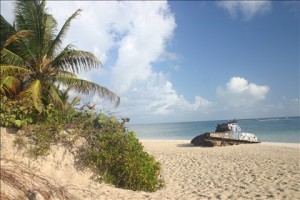 ad grown up in New York. His family was from Culebra and he had returned here now pretty much for good. We’d arrived Easter night, as many people who had been partying on Culebra during Semana Santa were leaving. Nelson said he was glad to see them go, although business had been lively while they were there. People got wild. The folks on Culebra are happy to share their island, he said, but they want visitors to be respectful.
ad grown up in New York. His family was from Culebra and he had returned here now pretty much for good. We’d arrived Easter night, as many people who had been partying on Culebra during Semana Santa were leaving. Nelson said he was glad to see them go, although business had been lively while they were there. People got wild. The folks on Culebra are happy to share their island, he said, but they want visitors to be respectful.
When we went to take the ferry back to Puerto Rico, there was a crowd building at the dock.
Perhaps we caught Culebra at a quiet post-Semana Santa moment, but it was tough to buy lunch. Again, at many towns, there would have been hawkers trying to sell you a meal. In Culebra, there was one woman working a takeout counter window, shown below. She had empanadas. The meat ones that my husband would have liked went quickly. There were none left when my turn to place an order came. The woman manning the counter told me the seafood ones were homemade. “They’re good,” she said. And it was. The empanada tasted as if it had been made within hour, with a good crust and fish with onions.
And it was. The empanada tasted as if it had been made within hour, with a good crust and fish with onions.
You get what they have in Culebra, and that’s pretty wonderful.
